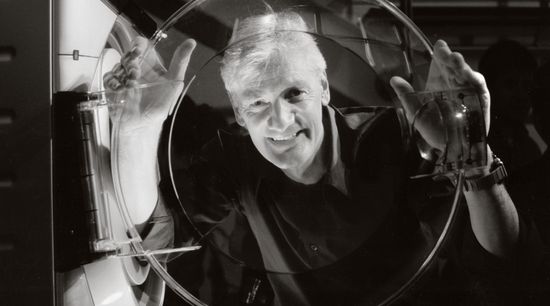Dyson Funds More than the Famed Engineering Award
/
The James Dyson Award is a cool platform for elevating inventive young minds. But Dyson’s giving extends to other STEM efforts, like a new university facility that’s more like a makerspace than a classroom.
James Dyson, in the U.S. at least, is probably best known for a few things—fancy vacuums, those fans shaped like rings, and the really powerful hand dryers in upscale bathrooms. Oh, and the annual James Dyson Award, which provides great fodder for tech news coverage as each round of young inventors reliably comes up with amazing creations. Past winners include a compact printer to create prototype circuit boards, a low-cost incubator for premature infants, and a robotic exoskeleton arm. See, fun.
Related: The 2015 Dyson Award is on, and the Real Prize is Exposure
James Dyson is also a major figure when it comes to promoting engineering, the artistic side of STEM, and the need to draw a diverse pool of young people to the field. He’s most active in the U.K., where his name is on multiple university buildings, and he’s even a knight. But his foundation also provides workshops, scholarships, and free curriculum here in the States.
Dyson's latest large philanthropic endeavor, via the James Dyson Foundation, is the Dyson Centre for Engineering Design at the University of Cambridge. A donation equivalent to around $12 million, paired with government support, backed the construction of a new building for postgraduate students and research, and the Dyson Centre, a space for 1,200 students to prototype engineering and design projects.
The facility sounds pretty cool, with a makerspace-influenced collaborative layout offering 3D printers, scanners, laser cutters, and machine tooling equipment. The idea is to provide a place where students can actually bring their ideas to reality, and team up with others who are working on something totally different. It’s brand new, but already home to a solar race car, quadcopters, and helium balloon spacecraft.
That kind of mad scientist sense of adventure is something Dyson’s philanthropy tends to reward, trying to draw young people to the engineering field (the U.S. isn’t the only country with STEM workforce problems) by emphasizing creativity and artistic expression. Dyson himself originally studied the arts before stumbling into engineering. This approach to reminding students that science isn’t formulaic drudgery has also become popular here in the States, under the acronym STEAM.
Related:
- An IT Giant Sees the "Maker" Movement As the Key to Getting Kids Excited about STEM
- Can Funding Makerspaces Make STEM Cool?
Dyson’s made some pretty hefty U.K. university gifts similar to the Cambridge center in the past, including around $17 million to set up an engineering school at Imperial College London in 2015. In 2013, the Dyson Building at the Royal College of Art opened, backed with $8 million from the James Dyson Foundation.
Having launched the U.S. version of the foundation in 2011, the funder also supports education in smaller individual amounts, providing scholarships worldwide, including the JDF Scholars at Northwestern University. Dyson’s US offices are located nearby in Chicago.
The Dyson website cites more than a million in annual support to schools and universities, and a growing scholarship program. The foundation also provides in-kind support in the form of large workshops around the US and free curriculum and educational kits available at its website.
Dyson's giving is still centered primarily on the UK, but he's selling a lot of vaccum cleaners and hand driers. With the engineer worth around $4 billion, and the company making about $2 billion in annual sales, there's a good chance this funder's profile will expand here in the United States and beyond.








